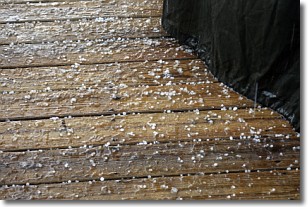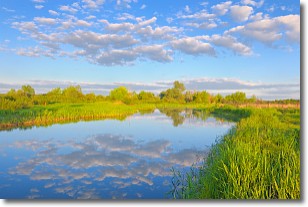Weather Alert in Kansas
Flash Flood Warning issued June 3 at 2:16PM CDT until June 3 at 7:00PM CDT by NWS Kansas City/Pleasant Hill MO
AREAS AFFECTED: Johnson, KS; Leavenworth, KS; Miami, KS; Wyandotte, KS; Cass, MO; Clay, MO; Jackson, MO; Platte, MO; Ray, MO
DESCRIPTION: FFWEAX The National Weather Service in Pleasant Hill MO has issued a * Flash Flood Warning for... Johnson County in east central Kansas... Northern Miami County in east central Kansas... Southwestern Leavenworth County in northeastern Kansas... Southern Wyandotte County in northeastern Kansas... Northwestern Cass County in west central Missouri... Southern Clay County in west central Missouri... Jackson County in west central Missouri... Southern Platte County in west central Missouri... Southwestern Ray County in west central Missouri... * Until 700 PM CDT. * At 216 PM CDT, Doppler radar indicated thunderstorms producing heavy rain across the warned area. Between 0.5 and 1.5 inches of rain have fallen. The expected rainfall rate is 1 to 3 inches in 1 hour. Additional rainfall amounts of 1 to 3 inches are possible in the warned area. Flash flooding is ongoing or expected to begin shortly. HAZARD...Flash flooding caused by thunderstorms. SOURCE...Radar. IMPACT...Flash flooding of small creeks and streams, urban areas, highways, streets and underpasses as well as other poor drainage and low-lying areas. * Some locations that will experience flash flooding include... Kansas City, Overland Park, Olathe, Independence, Lee's Summit, Shawnee, Blue Springs, Lenexa, Leawood, Raytown, Liberty, Gladstone, Grandview, Belton, Prairie Village, Raymore, Gardner, Merriam, Mission and Bonner Springs. This includes the following highways... Interstate 635 between mile markers 0 and 1...and between mile markers 10 and 12. Interstate 29 between mile markers 0 and 5. Kansas Turnpike between mile markers 206 and 211. Interstate 35 in Kansas between mile markers 200 and 235. Interstate 435 between mile markers 0 and 9...and between mile markers 51 and 83. Interstate 49 between mile markers 167 and 183. Interstate 70 in Missouri between mile markers 0 and 21. Interstate 35 in Missouri between mile markers 0 and 14. Interstate 70 in Kansas between mile markers 422 and 423. Interstate 470 between mile markers 0 and 16.
INSTRUCTION: Turn around, don't drown when encountering flooded roads. Most flood deaths occur in vehicles.
Want more detail? Get the Complete 7 Day and Night Detailed Forecast!
Current U.S. National Radar--Current
The Current National Weather Radar is shown below with a UTC Time (subtract 5 hours from UTC to get Eastern Time).

National Weather Forecast--Current
The Current National Weather Forecast and National Weather Map are shown below.

National Weather Forecast for Tomorrow
Tomorrow National Weather Forecast and Tomorrow National Weather Map are show below.

North America Water Vapor (Moisture)
This map shows recent moisture content over North America. Bright and colored areas show high moisture (ie, clouds); brown indicates very little moisture present; black indicates no moisture.

Weather Topic: What is Sleet?
Home - Education - Precipitation - Sleet
 Next Topic: Snow
Next Topic: Snow
Sleet is a form of precipitation in which small ice pellets are the primary
components. These ice pellets are smaller and more translucent than hailstones,
and harder than graupel. Sleet is caused by specific atmospheric conditions and
therefore typically doesn't last for extended periods of time.
The condition which leads to sleet formation requires a warmer body of air to be
wedged in between two sub-freezing bodies of air. When snow falls through a warmer
layer of air it melts, and as it falls through the next sub-freezing body of air
it freezes again, forming ice pellets known as sleet. In some cases, water
droplets don't have time to freeze before reaching the surface and the result is
freezing rain.
Next Topic: Snow
Weather Topic: What are Stratocumulus Clouds?
Home - Education - Cloud Types - Stratocumulus Clouds
 Next Topic: Stratus Clouds
Next Topic: Stratus Clouds
Stratocumulus clouds are similar to altocumulus clouds in their
fluffy appearance, but have a slightly darker shade due to their additional mass.
A good way to distinguish the two cloud types is to hold your hand out and measure
the size of an individual cloud; if it is the size of your thumb it is generally
an altocumulus cloud, if it is the size of your hand it is generally a
stratocumulus cloud.
It is uncommon for stratocumulus clouds to produce precipitation, but if they do
it is usually a light rain or snow.
Next Topic: Stratus Clouds
Current conditions powered by WeatherAPI.com




